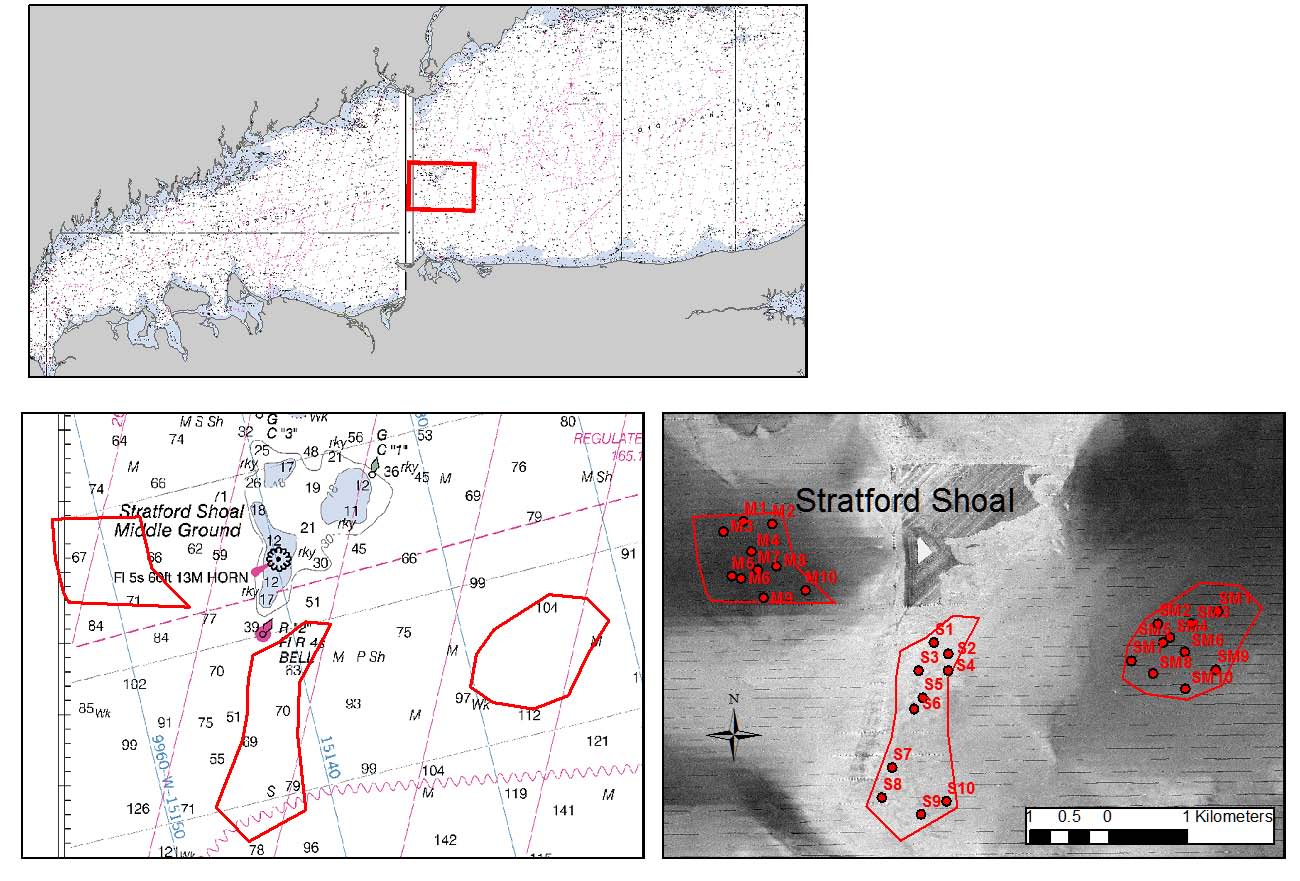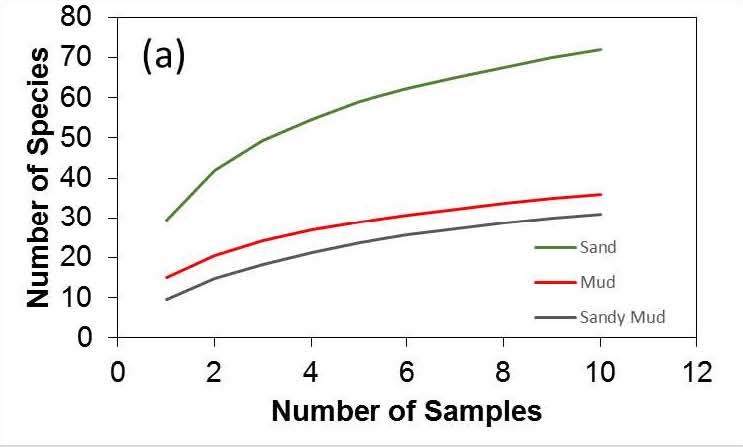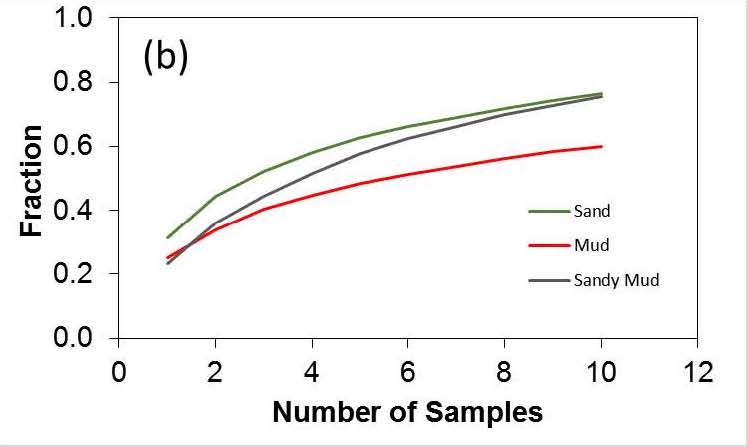The following summarizes the results of the Stony Brook University’s Infaunal Analyses of the Phase I Pilot Area Final Report:
- Three contrasting areas near Stratford Shoal were identified, each consisting of a homogeneous bottom type and on the basis of backscatter were expected to represent Sand, Mud, and Sandy Mud bottom types. Ten sampling stations were randomly positioned within each area, with sampling stations constrained to be at least 100 meters from the area boundary and any other station. Faunal and sediment sampling was conducted aboard the R/V Pritchard on 6/18/2013 and 9/11/2013. Bottom samples were collected using a modified van Veen grab (0.04 m2).
- A total of 5,640 animals representing 95 taxa were collected in the 30 samples. Average abundance across all 30 samples was 188 individuals per sample. Of the 95 taxa, 42 were polychaetes, 26 were crustaceans, 22 were molluscs, and the remainder (5) was distributed among other groups. Numerical dominants included the polychaetes Amphitrite artica, Paranois gracilis, and Polygordius, as well as the amphipods Ampelisca vadorum and Leptocheirus pinguis. These five taxa represented about 60% of the total number of individuals collected.
- Average faunal abundances in each area were 442 individuals per sample for Sand, 85 individuals per sample for Mud, and 37 individuals per sample for Sandy Mud. The average number of species per sample was 30 for Sand, 15 for Mud, and 9 for Sandy Mud.
- Largely because of cost, benthic community assessment and monitoring programs rarely collect more than a few replicate grab samples within a habitat. While this standard practice adequately characterizes abundant species, rare species are largely missed. Therefore, a small grab sampling study was designed to determine the number of samples needed to estimate the occurrence of rare species within a habitat (i.e., bottom type.)
- The Chao 2 species richness estimator was used to estimate the number of species present and the fraction of species collected in each bottom type.
- Species accumulation curves, Chao 2 estimates, and the fraction of species collected all fell within the range found for other local studies in the Peconics and in bays along the North Shore of Long Island. Combining all the studies, it is clear that three replicate samples in a habitat, a value often used in benthic studies, would recover only 13-50% of the species present. Even at 10 samples, there is evidence for under sampling in many of the habitats. In the present study, for example, 10 samples recovered only about 60% of the species in Mud bottom types. (Seasonal effects were not part of the study design.)
Here are some representative images and data products from this section of the Final Report. Hover your mouse over the image to stop the scroll and see the caption.
The Final Report and Appendixes can be found here: http://longislandsoundstudy.net/research-monitoring/seafloor-mapping


